Hi, I’m Michael Zhang, a Chinese travel enthusiast with a deep passion for history, culture, and immersive exploration. I’ve traveled across rivers and cities around the globe, but the moment I encountered the Three Gorges of the Yangtze River, I found myself pausing to reflect. In this article, I’ll guide you through the Three Gorges Dam, a modern marvel of Chinese engineering. I’ll not only explain the impressive scale and technical achievements of the project, but also share practical advice from my own trip—when to visit, how to get there, and what not to miss.
Summary
- About the Three Gorges Dam
- Map of Three Gorges Dam
- Why Was the Three Gorges Dam Built?
- What If the Three Gorges Dam Collapsed?
- Top Things to Do at the Three Gorges Dam
- Recommended Hotels Near the Three Gorges Dam
- How to Get from Downtown Yichang to the Three Gorges Dam
- How to Get from Yichang Sanxia Airport to the Three Gorges Dam
About the Three Gorges Dam
The Three Gorges Dam is located 45 kilometers from the city of Yichang, situated along the Xiling Gorge section of the Yangtze River. Positioned at the eastern end of the Three Gorges Reservoir, the dam controls a watershed of approximately one million square kilometers. Construction began in 1994. As the main structure of the Three Gorges Hydropower Station, it serves multiple functions including flood control, power generation, navigation, and water resource management. Today, it stands as one of the largest hydro-engineering projects in the world and the centerpiece of the Three Gorges Dam Tourist Area.
The project comprises the main dam body for water retention and flood discharge, power station buildings, and navigation structures. The dam itself is a concrete gravity dam, measuring 2,309.47 meters along its axis, with a total length of 2,335 meters. The crest elevation reaches 185 meters, and the maximum dam height is 181 meters. With a normal water level of 175 meters, the total storage capacity is 39.3 billion cubic meters, of which 22.15 billion cubic meters are allocated for flood control. The total installed generating capacity is 22.5 million kilowatts, producing over 100 billion kilowatt-hours of electricity annually.
- Address: Jiangxia Avenue, Sandouping Town, Yiling District, Yichang (Apple Maps/Amap)
- Opening Hours: 8:30 AM – 5:00 PM (based on the shuttle center schedule); the Three Gorges Project Museum is closed on Mondays.
- Suggested Visiting Duration: 2 to 4 hours
- Best Time to Visit: All year round. The dam typically discharges water in May–June to maintain safety levels—this is a spectacular sight if you’re lucky to witness it.
- Ticket Prices: Admission is free, but visitors must take the official shuttle bus (35 CNY) to access the interior of the scenic area.
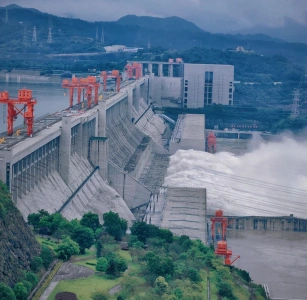
Map of Three Gorges Dam
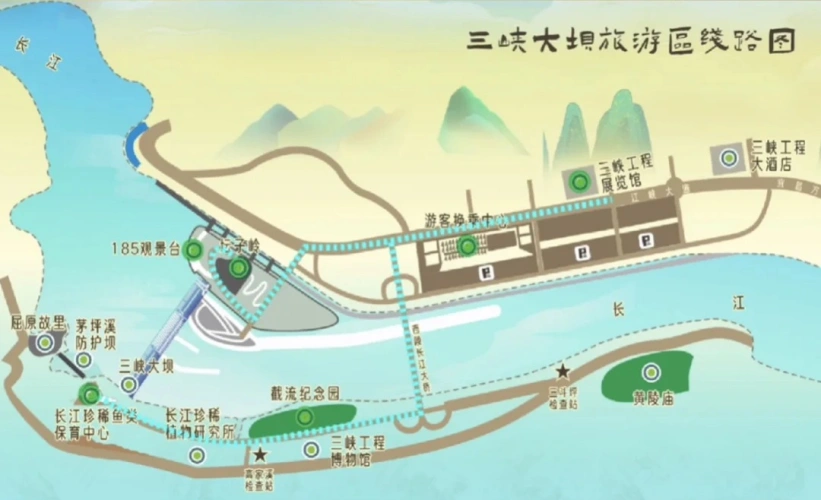
Why Was the Three Gorges Dam Built?
Flood Control and Disaster Mitigation
The Yangtze River has a long history of severe flooding. In 1954, catastrophic floods claimed the lives of 33,000 people. With 22.15 billion cubic meters of flood control storage, the Three Gorges Dam has raised the flood protection standard for the Jingjiang section from a 10-year flood to a 100-year flood level. In other words, even during extreme weather, the dam significantly reduces flood pressure on the middle and lower Yangtze, safeguarding vital agricultural and densely populated areas like the Jianghan Plain and Dongting Lake. The dam helps avoid economic losses exceeding 30 billion CNY annually.
Clean Energy Supply
The Three Gorges Hydropower Station is equipped with 34 hydroelectric generators. With a total installed capacity of 22.5 million kilowatts, it produces over 88.2 billion kilowatt-hours of electricity each year. This output offsets the need to burn 50 million tons of coal annually. It also meets a substantial portion of China’s national power demand, especially in Central and Eastern regions. As one of the world’s largest hydropower plants, the dam highlights China’s leadership in renewable energy development and its global contributions to clean energy.
Improved Navigation
Before the Three Gorges Dam was built, shipping along the Yangtze faced numerous challenges that hindered regional trade and logistics. With the reservoir in place, water levels rose and current speeds decreased, allowing large fleets of 10,000-ton vessels to reach Chongqing via a five-tier ship lock system. This greatly improved transport capacity and efficiency along the river while lowering logistical costs.
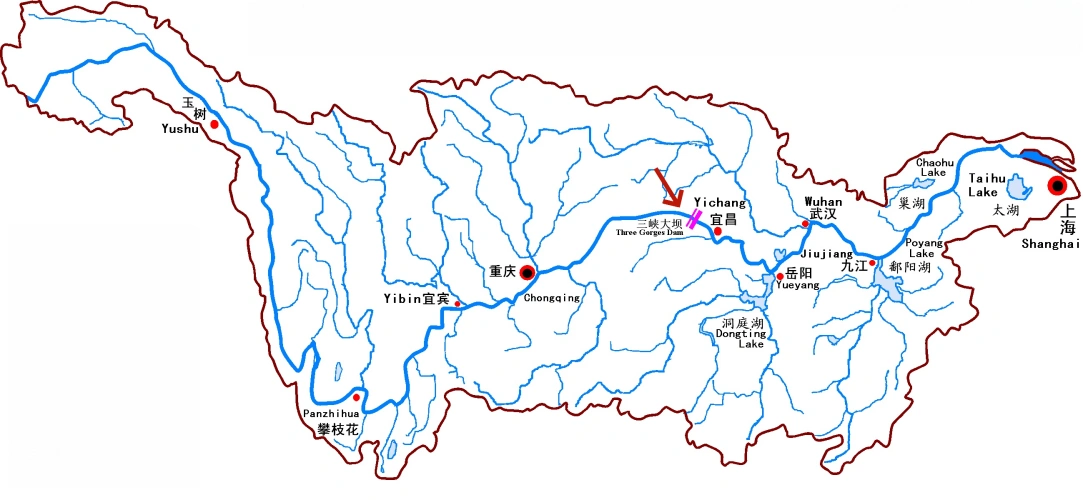
What If the Three Gorges Dam Collapsed?
Immediate Catastrophic Impact
- Flood Surge: A sudden release of the dam’s 39.3 billion tons of stored water would create a devastating surge downstream. Cities like Yichang, Nanjing, and Shanghai could face catastrophic flooding. For perspective, during World War II, a German dam failure with just 400 million tons of water caused 30,000 deaths—the Three Gorges’ volume is nearly 100 times larger.
- Chain Reactions: Downstream infrastructure, including the Gezhouba Dam, could be overwhelmed, amplifying the disaster’s scope.
Economic and Social Consequences
- Power Grid Disruption: The instant loss of 22.4 million kilowatts in generating capacity would destabilize Central and Eastern China’s electrical grid.
- Economic Paralysis: River transport would halt, and industries along the Yangtze economic belt would suffer massive damage. The direct economic loss could exceed 12 trillion CNY per year.
Top Things to Do at the Three Gorges Dam
Main Attractions
Tanziling
Tanziling is one of the key viewing platforms within the Three Gorges Dam Scenic Area and perhaps the best spot for visitors to grasp the full scale of the project. Situated at an elevated vantage point, it offers sweeping panoramic views of the dam’s massive structure and the winding riverbanks of the Yangtze. On clear days, the shimmering water where the dam meets the river creates a breathtaking scene—an ideal setting for photography and for experiencing the overwhelming power of modern hydraulic engineering.
Tanziling was also one of the earliest parts of the dam to open to the public. Multiple observation decks and interpretive signs are available, along with telescopes and site maps that help visitors better understand key structural components. From here, you can observe engineering marvels such as water discharge from the dam, the operation of the ship locks, and the water level differences between upstream and downstream.
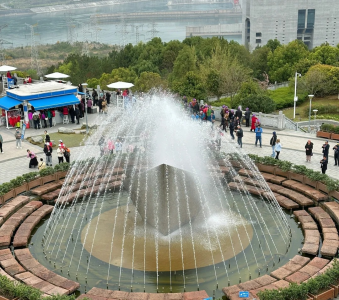
185 Platform
The 185 Platform is located at the crest of the dam and named after its elevation—185 meters above sea level. It’s the closest and most direct viewpoint of the dam’s core structure. From this spot, you can literally stand atop the dam and feel the scale of this monumental hydro-engineering project. It’s also where you can clearly see the difference in water levels before and after the dam, offering a firsthand look at the power of hydrodynamic regulation.
It takes about ten minutes to walk from Tanziling to the 185 Platform via the riverside trail. The walk itself is scenic and refreshing, making it well worth taking your time. A quick tip—don’t waste money on electric carts here! The entire walkway is just a few hundred meters long and features shaded areas and resting points, so walking is more than comfortable.
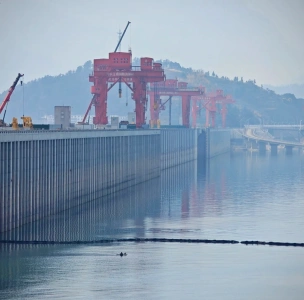
Three Gorges Project Museum
The Three Gorges Project Museum is the best place to explore the scientific principles, design philosophies, engineering processes, and historical background behind this monumental project. Through scale models, photographs, interactive exhibits, and multimedia presentations, the museum provides a detailed narrative of the entire journey from planning to completion. For those interested in engineering, technology, or China’s modern development, this stop is absolutely essential.
One highlight is the 4D documentary on the dam’s diversion phase, shown twice daily at 10:00 and 14:30. With immersive visuals and surround sound, the film vividly re-creates the dramatic scenes of the river’s interception. It’s strongly recommended to arrive early and grab a front-row seat for the best experience.
- Opening Hours: Tuesday to Sunday, 9:00 AM – 5:00 PM
- Closed: Every Monday – please plan accordingly
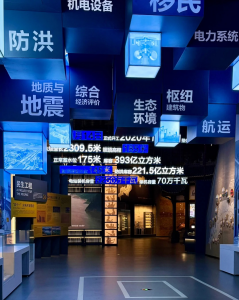
River Closure Memorial Park
The River Closure Memorial Park is a symbolic commemorative site built to honor the successful diversion of the Yangtze River in 1997—a key historical moment in the construction of the Three Gorges Dam. Within the park, various sculptures and leftover construction materials from the original project are on display. These elements vividly recreate the scenes of the worksite during that era, turning the park into a meaningful combination of education, culture, and memorialization.
You’ll see remnants of massive steel-reinforced concrete structures once used in the diversion process, along with slogans and messages left behind by frontline workers. The experience feels like stepping back into a time when the entire nation rallied around a single goal. More than just a photo stop, the park invites a quiet, reflective dialogue with history—perfect for those willing to slow down and take it all in.

Three Gorges Dam Ticket Guide
The Three Gorges Dam Scenic Area does not charge admission. However, access from the visitor center to the interior of the scenic zone, as well as travel between different points within the area, requires taking the official shuttle bus, which costs 35 CNY.
Three Gorges Dam Shuttle Ticket Prices
- Adults: 35 CNY
- Free Admission: Children under 6 years old
Where to Buy Tickets
- Online: Official WeChat mini-program
- Onsite: Ticket counter at the Three Gorges Dam Shuttle Center

Three Gorges Dam Tour Guide
The Three Gorges Dam does not offer official on-site tour guides. However, I highly recommend joining a one-day tour from downtown Yichang. The dam is located relatively far from the city center, so if you’re not driving yourself, booking a group tour is the most efficient way to cover both transportation and guided commentary. In fact, the Three Gorges Dam is one of those rare sites in China where a group tour actually provides a better experience than going solo.
- Book Day Tours: Trip.com Discounts, Klook Deals
Recommended Route for Visiting the Three Gorges Dam
The route for visiting the Three Gorges Dam Scenic Area is fairly standardized since it’s based on the path taken by the official shuttle bus. The sequence goes from the Visitor Transfer Center → Tanziling → 185 Platform → Three Gorges Project Museum → River Closure Memorial Park → Dam Miniature Landscape Park.
Where to Eat Near the Three Gorges Dam
The area around the base of the dam near the Tourist Service Center offers some of the most authentic local restaurants in Yichang. I don’t recommend traveling farther for meals—it takes extra time and the food won’t be significantly better.
Recommended Hotels Near the Three Gorges Dam
There are relatively few hotels near the Three Gorges Dam, and most are local guesthouses. If you’re looking for a place that is not only close to the dam but also convenient for visiting other attractions in Yichang, I suggest staying near Yichang Wanda Plaza. This area is right next to the Sanxia Tourist Center, making it easy to join tours like the Two Dams and One Gorge tour or the Yangtze River Night Cruise. It’s also near a major bus hub, and there are plenty of restaurants downstairs—very convenient for travelers.
Shuiyunlan Hotel
.webp)
- Location: 5-minute walk to Sanxia Tourist Center
- Price per night: 293 CNY
- Check Rates: Trip Discounts
- Rating: Trip 9.7
- Special Amenities: Gym, robot room service, laundry room, family rooms
Excellent location with easy access to Wanda Plaza and Sanxia Tourist Center, both within 5–7 minutes’ walk
Rooms are small but cozy and clean, well-equipped. The service is particularly warm—they even provide guests with prawn drinks and snacks.
Enjoying Hotel (Yichang Wanda Sanxia Tourist Center Hotel)
.webp)
- Location: 15-minute walk to Sanxia Tourist Center
- Price per night: 299 CNY
- Check Rates: Trip Discounts
- Rating: Trip 9.5
- Special Amenities: Laundry room, family rooms
Close to both Wanda business district and the Sanxia Tourist Center. Right across the street is the riverside park—truly half city, half nature, with beautiful scenery.
While it’s an older hotel, the rooms are spacious, bright, and clean. Facilities are well-maintained. Great value for money.
How to Get from Downtown Yichang to the Three Gorges Dam
Taking Bus 216 is highly recommended. It’s not much slower than taking a taxi, but it’s significantly more affordable and has many boarding points around the city.
Public Transportation
- Bus 216 (from Yemingzhu Coach Station to the Three Gorges Dam Transfer Center): This is a tourist-style coach, not a regular city bus. Fare is 15 CNY, takes about 1 hour. First bus at 7:00 AM, last at 5:00 PM. It also stops at the Xiling Gorge Observation Deck.
- Bus 809 (from Yichang East Railway Station to Zigui): Get off at the “Three Gorges Dam Transfer Center.” Takes around 1.5 hours.
Taxi / Ride-Hailing Services
Taking a taxi from downtown Yichang to the dam takes around 50 minutes and costs approximately 130 CNY.
How to Get from Yichang Sanxia Airport to the Three Gorges Dam
There’s no direct public transport from Yichang Sanxia Airport to the dam. The recommended route is to first take the airport bus to Yichang East Railway Station and then transfer to Bus 809.
Public Transportation
First, take the airport shuttle to Yichang East Railway Station, then transfer to Bus 809 to reach the dam.
- Airport Shuttle: 25 CNY, takes about 40 minutes. Note that it departs only when full, so wait time may vary.
- Bus 809: 17 CNY, about 1 hour travel time.
Taxi / Ride-Hailing Services
A direct taxi from Sanxia Airport to the Three Gorges Dam takes roughly 1 hour and costs around 120 CNY.

 English (US)
English (US)  English (Hong Kong)
English (Hong Kong)  English (Malaysia)
English (Malaysia)  English (Singapore)
English (Singapore)  繁體中文
繁體中文 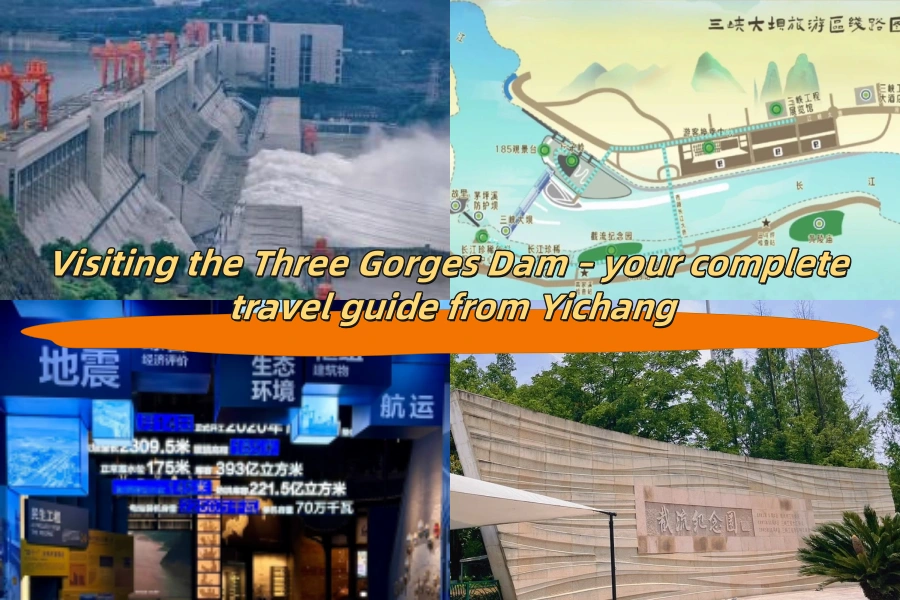
Comment (0)